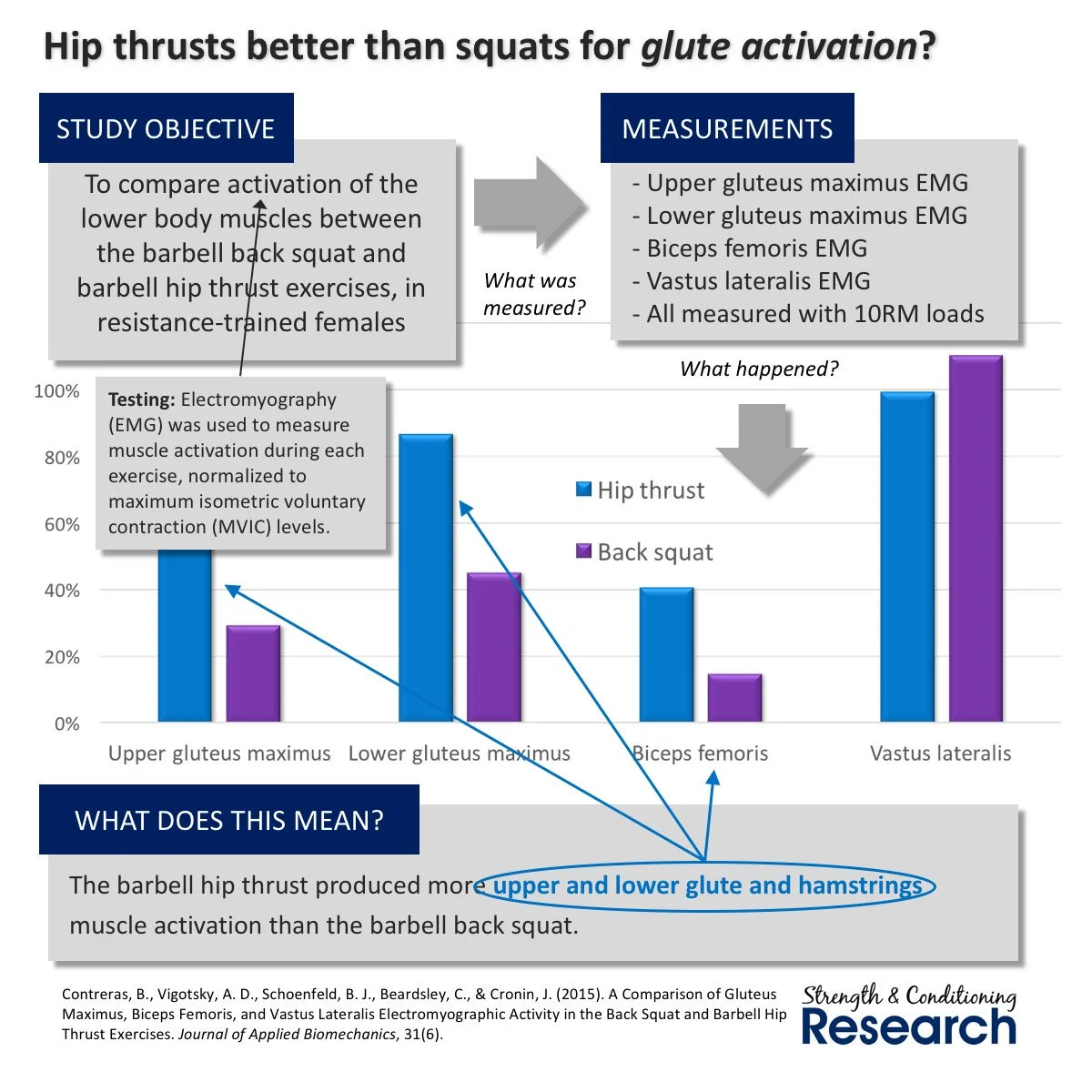The hip thrust is becoming an increasingly popular exercise. And for good reason. It's very effective, improves movement (when done correctly), and is safe.
I've written about it before here. But the basic 3 advantages are:
1) Glute Activation
Isolates glute activation
Places hip extension perpendicular to the resistance (gravity)
Max Glute EMG occurs at 0 degrees of hip extension
Removes hamstring influence (active insufficiency)
Can be used for post-activation potential prior to more complex exercises (hip hinge, squat, etc.)
2) Hip/Lumbar Dissociation
Most hip and back patients live with their butts in their backs (substituting lumbar extension for hip extension)
The Hip Thrust is regressive and can be used as an assessment and intervention for hip/lumbar dissociation
Stop once it goes from hip extension to lumbar extension (patient education)
3) Safety
It’s an unloaded, bodyweight movement
It’s a simple movement – less complex than the hip hinge or squat
Overall it's a great exercise when performed correctly and in the right situation.
